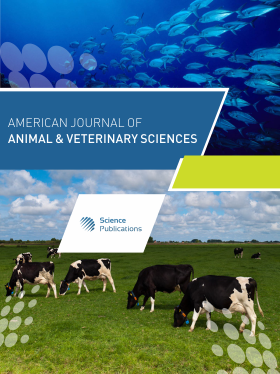Relationship between Volumetric Water Footprint with Carcass and Meat Quality Characteristics Under Intensive Beef Cattle Production in South Africa
- 1 Department of Animal Sciences, Tshwane University of Technology, Pretoria, South Africa
- 2 Department of Animal Science and Production, Botswana University of Agriculture and Natural Resources, Gaborone, Botswana
- 3 Department of Animal Production, Agricultural Research Council, Irene, South Africa
Abstract
As water accessibility becomes more challenging due to the increasing human population and agricultural competition, it is crucial to select beef cattle with optimal water efficiency. The study aimed to investigate the relationship between volumetric water footprint with carcass and meat quality of beef cattle under an intensive production system. Thirty-three (33) beef cattle weaners of three different body frame sizes (small = 11, medium = 11, and large = 11), representing three different breeds of similar age and body weight groups were obtained from stud breeders. The volumetric water footprint computed were Water Intake Efficiency (WIE), Water Consumption Efficiency (WCE), and Water-Feed-Ratio (WFR). The General Linear Model was used to analyze the data and means were separated using the Fisher LSD test. Pearson moment correlation coefficient was computed to determine the relationship between the volumetric water footprint with carcass and meat quality traits (p<0.05). In large-frame size beef cattle, the WIE was significantly (p<0.05) correlated with protein percentage (r = -0.5960). Whereas insignificantly (p>0.05) correlated with meat color, proximate analyses, and carcass weights. A positive relationship (p<0.05) was observed between WFR and warm (r = 0.641) and cold (r = 0.620) carcass weights. In medium-frame size beef cattle, the WIE was significantly (p<0.05) correlated with warm carcass weight (r = - 0.617) and cold carcass weight (r = 0.620). In small-frame beef cattle, the WIE showed a significant (p<0.05) positive relationship with drip loss (r = 0.710). The WFR was only significantly (p<0.05) correlated with L*(lightness) meat color (r = -0.675). The volumetric water footprint indicators in beef cattle were not correlated to each other in the medium and large-frame size breeds, whereas in the small-frame size breed, the WCE was correlated with the WIE and WFR. Generally, there is a lack of significant associations between the volumetric water footprint indicators in all the beef cattle frame sizes with the majority of carcass and meat quality parameters.
DOI: https://doi.org/10.3844/ajavsp.2024.315.328

- 383 Views
- 285 Downloads
- 0 Citations
Download
Keywords
- Beef Cattle
- Water Intake Efficiency
- Consumption Efficiency
- Water-to-Feed Ratio
- Water
